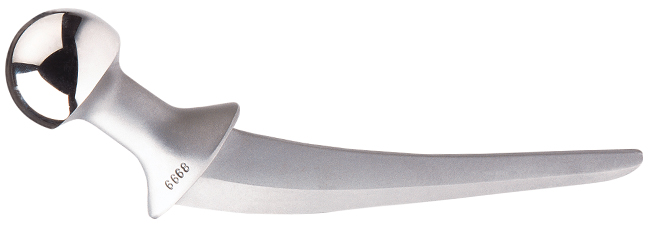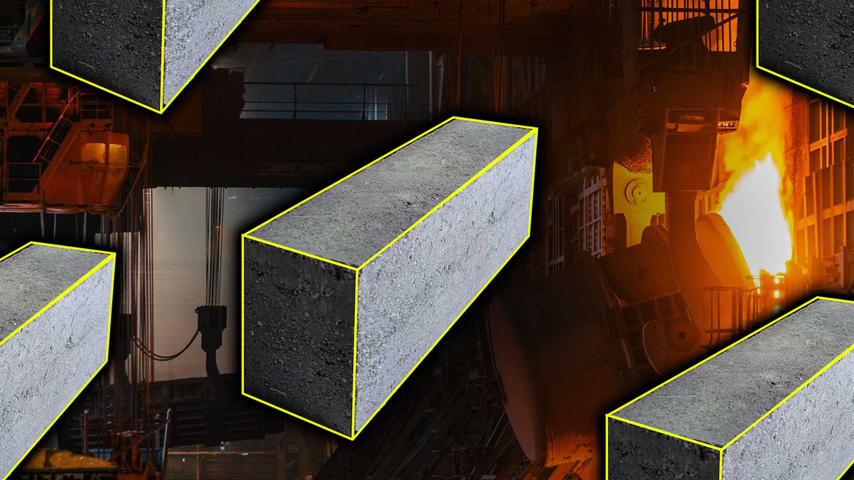How Bioengineers Are Enhancing the Quality of Healthcare
How Bioengineers Are Enhancing the Quality of Healthcare


Prosthetic ball and socket joint.
The outlook for careers in bioengineering is very positive. With an aging population and a growing focus on health-care issues, the demand for more sophisticated medical equipment and procedures along with a need for more cost-effective care delivery is high?and, bioengineers are right in the thick of it.
Bioengineers are an interesting breed. Often they are needed to bridge traditional engineering skills with medical applications, working hand-in-hand with health-care professionals including physicians, nurses, therapists, and technicians to solve a wide variety of problems.
They are involved in designing instruments, devices, and software to develop new procedures or solve clinical problems. In fact, bioengineering is behind many of the most modern, groundbreaking health-care techniques that are commonplace today, such as ultrasound, MRI, and other imaging techniques, and the development of artificial hips, knees, and other prosthetic implants.
They can also take credit for developing pacemakers, dialysis machines, and diagnostic equipment, all for the enhancement of health care.
Today, bioengineering students have many options. Some graduates may work as biomedical engineers alongside medical practitioners to develop new medical techniques, medical devices, and instrumentation for manufacturing companies.
Others can choose clinical engineering and work in hospitals or clinics to maintain and improve the vast amount of technological support required in modern medicine. Government researchers often work in product testing and safety, where they establish safety standards for medical devices. A biomedical engineer employed in a hospital might advise on the selection and use of medical equipment or supervise performance testing and maintenance.
The Biomedical Engineering Society has developed a list of the major specialty areas in bioengineering. They include:
- Bioinstrumentation is the application of electronics and measurement techniques to develop devices used in diagnosis and treatment of disease
- Biomaterials include both living tissue and artificial materials used for implantation. Understanding the properties and behavior of living material is vital in the design of implant materials. The selection of an appropriate material to place in the human body may be one of the most difficult tasks faced by the biomedical engineer.
- Biomechanics applies classical mechanics (statics, dynamics, fluids, solids, thermodynamics, and continuum mechanics) to biological or medical problems. It includes the study of motion, material deformation, flow within the body and in devices, and transport of chemical constituents across biological and synthetic media and membranes.
- Cellular, Tissue, and Genetic Engineering involve more recent attempts to attack biomedical problems at the microscopic level. These areas utilize the anatomy, biochemistry, and mechanics of cellular and subcellular structures in order to understand disease processes and to be able to intervene at very specific sites.
- Clinical Engineering is the application of technology to health care in hospitals. Clinical engineers are responsible for developing and maintaining computer databases of medical instrumentation and equipment records and for the purchase and use of sophisticated medical instruments. They may also work with physicians to adapt instrumentation to the specific needs of the physician and the hospital.
- Medical Imaging combines knowledge of a unique physical phenomenon (sound, radiation, magnetism, etc.) with high-speed electronic data processing, analysis, and display to generate an image.
- Orthopaedic Bioengineering is the specialtyin whichmethods of engineering and computational mechanics have been applied for the understanding of the function of bones, joints, and muscles, and for the design of artificial joint replacements. Orthopaedic bioengineers analyze the friction, lubrication, and wear characteristics of natural and artificial joints; they perform stress analysis of the musculoskeletal system; and they develop artificial biomaterials (biologic and synthetic) for replacement of bones, cartilages, ligaments, tendons, meniscus, and intervertebral discs.
- Rehabilitation Engineering is a growing specialty area of biomedical engineering. Rehabilitation engineers enhance the capabilities and improve the quality of life for individuals with physical and cognitive impairments. They are involved in prosthetics, the development of home, workplace, and transportation modifications and the design of assistive technology that enhance seating and positioning, mobility, and communication.
- Systems Physiology is the term used to describe that aspect of biomedical engineering in which engineering strategies, techniques, and tools are used to gain a comprehensive and integrated understanding of the function of living organisms ranging from bacteria to humans.
More information on bioengineer careers can be found on the Biomedical Engineering Society Web site at http://www.bmes.org/aws/BMES/pt/sp/be_faqs.
Tom Ricci is the owner of Ricci Communications.
Some [bioengineering] graduates may work as biomedical engineers alongside medical practitioners to develop new medical techniques, medical devices, and instrumentation for manufacturing companies.




